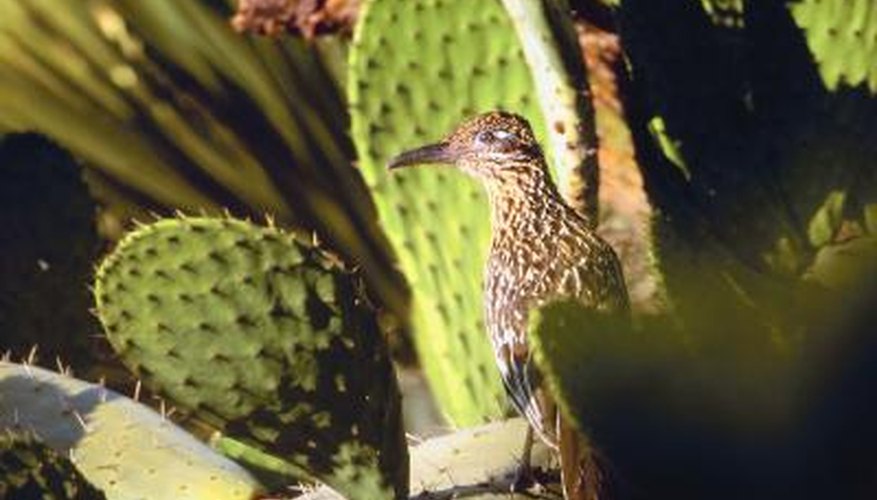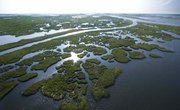
Even though deserts are hot and arid environments, hundreds of species thrive in these habitats. A great variety of birds live in the desert, each fulfilling a different role for their ecosystem. Without a need to migrate south, desert birds make the dry landscape their permanent home. Whether you're a birdwatcher or bird enthusiast, birds of the desert are important creatures.
Birds of Prey
Raptors circle the air searching for any rodents or reptiles on the ground. Hawks and eagles are common in the desert, specifically the red-tailed hawk and Cooper's hawk. Ospreys and falcons are less common, but also find their food in desert. Bald eagles and golden eagles both may be spotted in deserts, the former in areas closer to water, the latter in the driest areas. Owls of all types live in deserts, often within cacti, resting until night when they make their hunts.
Land Birds
The first bird that comes to mind when talking about desert birds is the roadrunner. This speedy land bird chases its prey on land, rather than flying and swooping down as a bird of prey would. Another desert bird that spends most of its time on land is the quail, which is plump like a pigeon and a poor flyer. Some quail species that live in desert environments include Gambel's quail and the masked bobwhite.
Water Birds
It can be hard to find water in the desert, but birds almost always accompany the pools. Taller birds found along shorelines are the avocet and stilt. Smaller water birds include the killdeer, grebe and duck. Many species of duck can be found in the desert, such as the pintail, shoveler, teal, redhead, ruddy and whistling-duck. Great blue herons may also be found in the oasis of a desert, not to be confused with cranes.
Small Birds
Hundreds of small birds live throughout desert habitats. Hummingbirds feed on the nectar found on flowers of cacti, and woodpeckers peck on their sides in place of the hard bark of trees. Many other birds can be spotted in deserts, including blackbirds, orioles, cardinals, finches, doves, tanagers, verdins, gnatcatchers, grosbeaks, phainopeplas, flycatchers, swallows, ravens, wrens, warblers, mockingbirds and sparrows. These smaller birds will eat small insects or some types of plant growth like berries.
References
Writer Bio
Arlen Hershey has been writing science curriculum for informal science education organizations since 2006. She has written for Experiencia and Sea World. She has a bachelor's degree in biology from the University of Illinois.



